Most hikers consider a 10-mile day on the trail a solid achievement. But for those looking to push their limits, America’s national parks serve up day hikes that’ll make your quads scream and your heart pound.
These aren’t your typical walking paths – we’re talking about trails that combine quad-burning elevation gain, technical scrambling, and conditions that change faster than your hiking socks get wet.
I’ve tackled some of these monsters myself, and let me tell you – they’re the kind of hikes that test not just your fitness, but your mental game too.
The hardest hikes in the US are the months-long through hikes the Appalachian Trail and the Pacific Rim Trail, but these are the hardest hikes in US national parks that you can realistically do in a day.
Ready to challenge yourself?
No time right now to read about the hardest day hikes in the US national parks? Pin It and save it for later:


🛏️FIND A HOTEL: Search now
🚘FIND THE CHEAPEST CAR RENTAL: Search Discover Cars for the best deals
✈️FIND THE CHEAPEST FLIGHTS: Search Skyscanner for the best deals
🧳GET TRAVEL INSURANCE: Get insured with Travelex before you go
📱TAKE AN AUDIO TOUR: Buy an audio tour now
Subscribe to daily national parks planning tips, travel inspiration and trip ideas and I’ll send you a free PDF of this Guide:
The 8 Hardest Day Hikes in the US National Parks (That You’ll Love!)
Table of Contents
The Toughest Day Hikes in America’s National Parks
These eight trails represent the cream of the crop when it comes to challenging day hikes in America’s national parks. They’re the kind of hikes that’ll have you questioning your choices halfway up, but leave you grinning like crazy at the end. Each one dishes out its own unique flavor of difficulty.
Just remember – these trails earned their reputation as the hardest for good reason. They demand respect, proper planning, and honest self-assessment. But if you’re ready for the challenge, they’ll give you some of the most rewarding hiking experiences you can find in our national parks.
So, what are the toughest hikes in the US national parks? Let’s find out.
1. Grand Canyon Rim to Rim
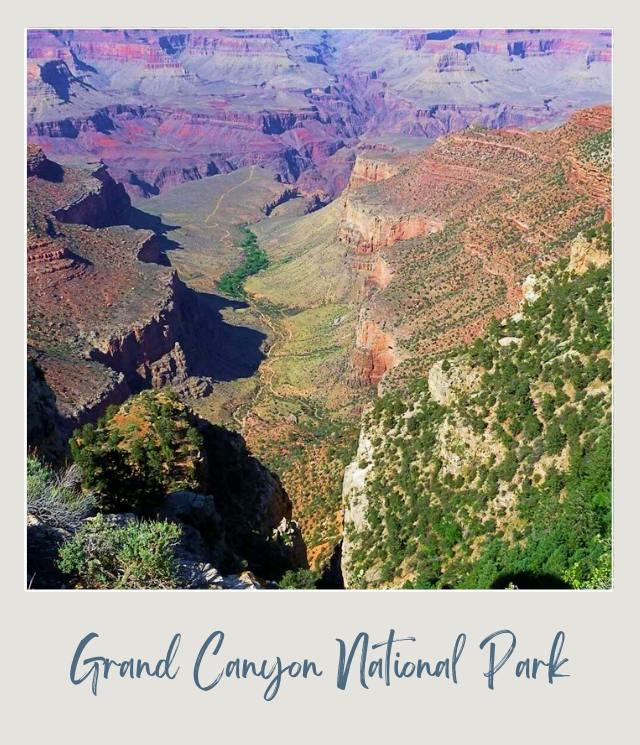
National Park: Grand Canyon National Park
Length: 23.5 miles
Elevation Gain: 10,141 feet
Average Time to Complete: 12-15 hours
Difficulty Rating: 9.5/10
There are a couple of ways you can do this: North (starting on the North Kaibab Trail) to South (ending on the Bright Angel Trail or the South Kaibab Trail) – or in reverse order.
Any of these routes takes hikers on an epic journey across the Grand Canyon. You’ll drop down from the South (or North) Rim, cross the mighty Colorado River, climb up to the North (or South) Rim. It’s not for the faint of heart.
This is one of the most dangerous hikes in the US – over 250 people need rescue here each year. What make this the most dangerous hike in US national parks? The summer heat is brutal (frequently over 100°F at the canyon bottom) – and you start by descending into the canyon, which means you’re climbing out when you’re most tired.
Most fit hikers need 12-15 hours to finish this monster of a trail. You’ll want to pack plenty of water and food, as resupply points are limited. The South Kaibab Trail offers less shade (and not water sources) but more direct views, while the North Kaibab Trail winds through deeper sections of the canyon.
As you drop into the canyon’s depths and climb back out, you’ll pass through distinct rock layers and climate zones. The physical demands are intense – you’re essentially climbing a mountain in reverse.
The combination of distance, elevation change, and harsh conditions makes this one of the hardest day hikes in any national park.
It’s worth noting that although people do hike all at once, the NPS does not recommend that you do this in one day. Make this easier by staying overnight at Phantom Ranch. Learn about Making Phantom Ranch Reservations
Make this harder by doing a Rim-to-Rim-Rim and do it all over again in reverse straight away (not recommended for most people – I personally can’t imagine doing this, though some people do).
Be very careful about doing this in summer. The heat is brutal!
Note that the South Kaibab Trail has no water, so the Bright Angel Trail is better if you’re hiking North-South.
➡️ Read my Guide to The Bright Angel Trail.
2. Half Dome
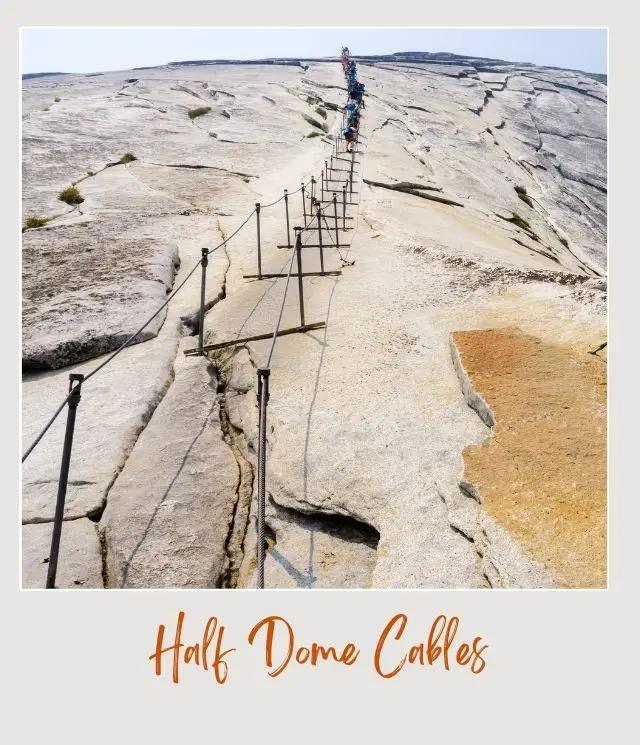
National Park: Yosemite National Park
Length: 14-16 miles
Elevation Gain: 4,800 feet
Average Time to Complete: 10-14 hours
Difficulty Rating: 8.5/10
The Half Dome trail takes you on a strenuous 14- to 16-mile journey that’ll test your limits. You’ll gain 4,800 feet in elevation as you make your way up through Yosemite’s most iconic trail. It’s a long day – most hikers need 10 to 14 hours to complete the round trip.
Getting to the top isn’t just about distance. The last 400 feet will get your heart racing as you pull yourself up steep granite using metal cables. This section makes this one of the most dangerous national park hikes. Your hands grip the steel cables while your feet search for traction on the smooth rock face. The drop-offs on either side? Let’s just say you won’t want to look down.
The views along the way are worth every step. You’ll pass right by the spray of Vernal Falls and Nevada Falls, with the granite walls of Yosemite Valley stretching out below you. The summit gives you a bird’s eye view that makes the challenge worth it.
You need a permit to climb those cables. The National Park Service runs a lottery system to limit crowds on the busiest sections. Your chances of scoring a permit? It varies by season, but planning ahead is key.
The cables are typically up from late May through early October, depending on conditions.
3. Long’s Peak

National Park: Rocky Mountain National Park
Length: 15 miles
Elevation Gain: 5,100 feet
Average Time to Complete: 12-16 hours
Difficulty Rating: 9/10
Doing this hike means waking up at 3:00 AM to beat afternoon storms.
The trail starts in the dark forest before breaking into the alpine zone, where the real challenge begins. At 14,259 feet, this mountain stands as one of Colorado’s most demanding day hikes.
The infamous Keyhole Route throws everything at you – narrow ledges, loose rock scrambling, and exposure that’ll make your palms sweat. The thin air hits hard up there, and even in summer, you might hit patches of ice and snow near the top. The technical sections come after you pass through the actual Keyhole formation, a distinctive notch in the rock that marks the start of the most challenging terrain.
The weather changes fast up here. What starts as a clear morning can turn into an afternoon thunderstorm without warning. Most hikers start around 2:00 or 3:00 AM to beat the storms and get down before lightning becomes a risk.
You’ll want solid scrambling skills and a good head for heights – there’s no room for second-guessing on those narrow ledges with steep drop-offs.
The summit rewards you with stunning views in every direction. Looking east, the Great Plains stretch out like a carpet. To the west, you’ll see the jagged peaks of the Continental Divide cutting across the horizon.
But remember – getting to the top is only halfway. The descent requires just as much focus as the climb up.
4. Angel’s Landing
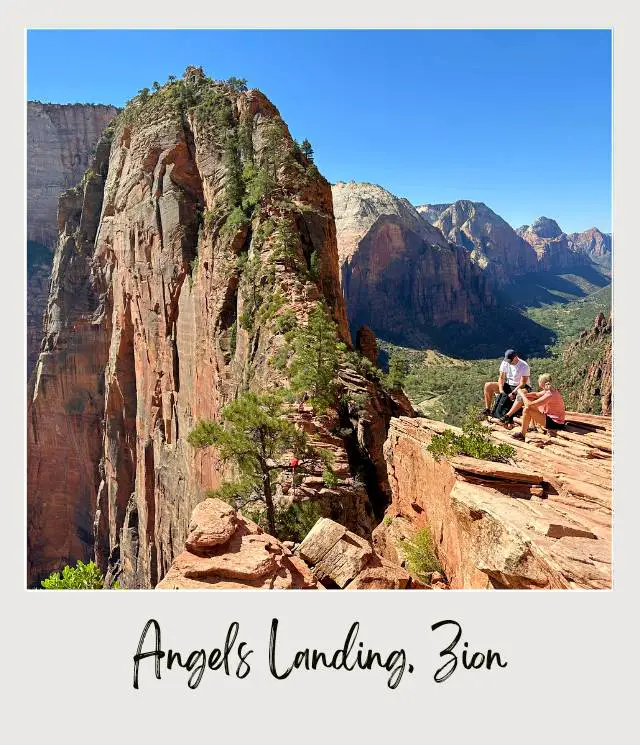
National Park: Zion National Park
Length: 5 miles
Elevation Gain: 1,500 feet
Average Time to Complete: 4-5 hours
Difficulty Rating: 8/10
When they think of the most dangerous hikes in America, Angels Landing is top of many people’s list.
Angels Landing in Zion might be shorter at 5 miles, but it’s one of the craziest hikes in America.
You’ll gain 1,500 feet as you climb up through Zion’s striking red rock formations. The first section takes you up Walter’s Wiggles – a set of 21 tight switchbacks that’ll get your legs burning.
But it’s the last half-mile that makes this one of the most dangerous hikes in national parks. The path narrows to just a few feet wide, with sheer 1,000-foot drops on both sides. Steel chains bolted into the rock are your lifeline as you make your way across the razor-thin ridge. Your knuckles might turn white, but those chains are solid.
The views from the top? You’ll see the full sweep of Zion Canyon stretching out below you, with the Virgin River winding like a thin ribbon through the valley floor. The morning light hitting the red sandstone cliffs makes for killer photos – if you can steady your hands enough to take them.
Getting a permit is the first challenge these days. The National Park Service started a lottery system to control crowds on the chains section. It’s made the hike safer, but you’ll need to plan ahead. The trail is doable year-round, but spring and fall bring the best conditions.
➡️ Read my guide to Getting a Permit for Angels Landing
➡️ Tips for Hiking Angels Landing
5. Paintbrush Divide -Cascade Canyons Loop
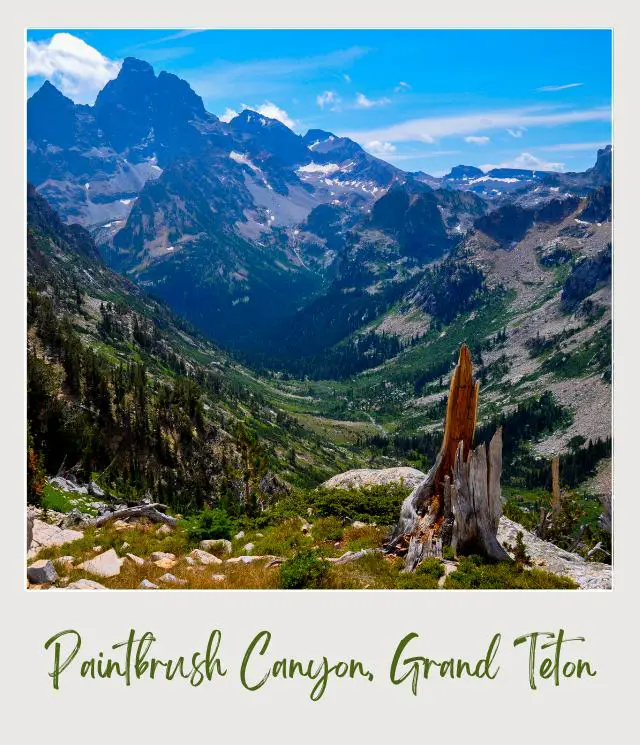
National Park: Grand Teton National Park
Length: 19 miles
Elevation Gain: 4,500 feet
Average Time to Complete: 10-12 hours
Difficulty Rating: 8/10
The Paintbrush Divide – Cascade Canyon Loop throws 19 miles and 4,000+ feet of climbing at you. It starts nice and easy at String Lake, but don’t let that fool you. It’s one of the hardest day hikes in the United States, taking you up and over Paintbrush Divide at 10,700 feet.
The rocky terrain near the divide will test your stamina – you’ll pick your way through boulder fields while catching your breath in the thin air. You’ll hit snowfields even in summer, and the switchbacks seem endless.
The views make the burn worth it. The Grand Teton towers above you as you cross the divide, with jagged peaks stretching out in every direction. You’ll pass by crystal-clear alpine lakes that mirror the mountains, perfect spots to refuel if you can take your eyes off the scenery.
The loop takes you through totally different landscapes. One minute you’re in meadows filled with wildflowers, the next you’re scrambling over loose scree.
Weather changes fast up here – even in August, you might hit snow patches near the divide. Smart hikers start early and pack layers.
Watch for wildlife along the way. Moose hang out in the wet areas below Lake Solitude, while marmots whistle warnings from the rocks up high. The mix of challenging terrain and stunning mountain views puts this loop on par with the toughest day hikes in any national park.
➡️ Read my Cascade Trail Guide for more detail on that section of this hike
➡️ Read The Best Hikes in Grand Teton National Park
6. High Divide-Sol Duc Loop

National Park: Olympic National Park
Length: 19 miles
Elevation Gain: 4,200 feet
Average Time to Complete: 8-10 hours
Difficulty Rating: 7/10
The High Divide-Sol Duc Loop takes you on a challenging 19-mile journey through Olympic National Park’s varied terrain. It’s one of the toughest day hikes in America because you’ll gain about 5,000 feet as you climb from old-growth rainforest into open alpine zones. The steep sections will test your legs – there’s no easy way to tackle this much elevation.
The trail starts in thick forest before opening up to give you clear shots of Mount Olympus and the Blue Glacier. These views hit different in the early morning light when the peaks catch the first sun. You might spot Roosevelt elk grazing in the meadows or black bears digging for berries, especially in late summer.
The weather up here changes fast. One minute you’re hiking in sunshine, the next you’re pulling on rain gear as clouds roll in. Snow often sticks around on the higher sections into July, making early season hiking tricky. You’ll want microspikes and poles if you’re hitting this before mid-summer.
➡️ Read my guide to The Best Microspikes for Hiking if you need to get some
➡️ Get the hiking poles I use and love if you need some
The loop throws everything at you – muddy sections in the forest, rocky scrambles up high, and stream crossings that can run high in spring. Most hikers tackle this clockwise, getting the steepest climbing done early. Pack extra layers – even in August, temperatures swing wildly between the forest floor and the exposed ridge tops.
➡️ Read the Best Hikes in Sol Duc
7. Mount Whitney Trail
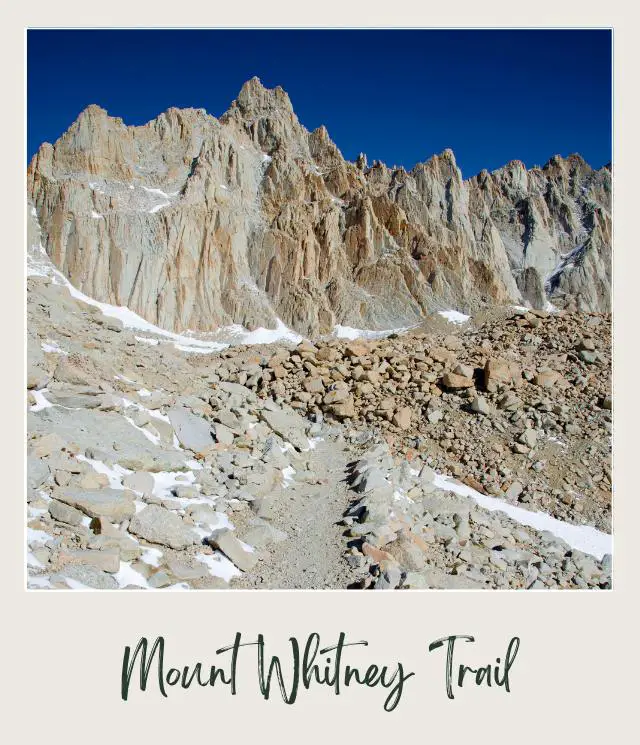
National Park: Inyo National Forest (near Sequoia National Park)
Length: 22 miles (out and back)
Elevation Gain: 6,100 feet
Average Time to Complete: 12-16 hours
Difficulty Rating: 8/10
The Mount Whitney Trail puts 22 tough miles and 6,700 feet of climbing between you and the highest point in the lower 48 states. At 14,505 feet, the thin air hits different – even fit hikers can struggle with altitude sickness as they push toward the summit. Most people need 12-14 hours to complete this monster of a day hike.
The trail starts in the trees but quickly breaks into alpine terrain. You’ll cross streams, pick through boulder fields, and tackle the infamous “97 switchbacks” that seem to go on forever.
The views get better with every step – if you can catch your breath long enough to look around. The Eastern Sierra spreads out below you, while jagged peaks pierce the sky in every direction.
Getting a permit is your first challenge. The Forest Service runs a lottery system to keep the crowds manageable. If you score one, timing is everything. Start early – like 2:00 AM early – to beat afternoon thunderstorms and give yourself enough daylight. The weather changes fast up here, and the exposed sections near the top leave you nowhere to hide when storms roll in.
The summit itself? Standing on top of the continental US (minus Alaska) feels pretty special. Just remember – the top is only halfway. You’ve still got 11 miles to get back to your car.
8. Harding Icefield Trail

National Park: Kenai Fjords National Park
Length: 8-9 miles
Elevation Gain: 3,000 feet
Average Time to Complete: 6-8 hours
Difficulty Rating: 7/10
The Harding Icefield Trail packs a serious punch into its 8.2-mile round trip length. You’ll gain 3,000 feet as you climb at a relentless grade of 1,000 feet per mile. That’s steeper than most stadium stairs, and it keeps going, and going, and going.
The path starts in a green valley but quickly turns into a leg-burning ascent. The vegetation thins out as you gain elevation, giving way to rocky terrain and patches of snow that often stick around through July. The weather adds another layer of challenge – conditions can flip from sunny to stormy in minutes. You’ll want rain gear and extra layers no matter what the forecast says.
The payoff at the top will stop you in your tracks. The massive Harding Icefield stretches out before you, a sea of ice that seems to go on forever. Glaciers pour down from the field like frozen rivers, while mountain peaks stick up through the ice like islands in a white ocean.
The exposed sections near the top can get brutal when the wind kicks up. There’s nowhere to hide from the elements up here. Most hikers need 6-8 hours for the round trip, but don’t rush it. The combination of steep climbing, weather changes, and high altitude puts this trail up there with Alaska’s toughest day hikes.
Time it right between late June and September if you want to avoid deep snow.
Why are these the hardest hikes in America?
A hike’s difficulty comes down to several key factors that work together to test your limits.
Distance
This isn’t the only factor, but it’s the most obvious one. Not all the hikes on this list are super long – but most of them are. The longer, obviously the more energy they take and the fitter you need to be.
Physical Demands
The raw numbers tell part of the story. It’s often a combination of many factors that combine to make it so hard. If a trail has 11,000 feet of elevation gain over 22 miles, it’s going to be tough. That’s like climbing a really tall building, except you’re doing it for hours on end.
Environmental Challenges
It’s not just about distance and elevation. The Grand Canyon’s Rim to Rim hike might be “only” 21 miles, but when you’re dealing with intense desert heat and no shade, those miles feel twice as long. Over at Long’s Peak in Rocky Mountain National Park, you’re fighting thin air at 14,259 feet, bitter cold winds, and the very real possibility of afternoon thunderstorms cutting your hike short.
Technical Requirements
Some trails throw technical challenges your way that make simple walking feel like a complex puzzle. The Paintbrush Divide Trail in the Grand Tetons has you crossing snowfields even in summer. Other hikes can test your footing with sketchy terrain at high elevations. These aren’t just physical challenges – they’re mental ones too, requiring focus and good decision-making when you’re already tired.
Personal Factors
What’s brutal for one hiker might be just another Thursday for someone else. Your fitness level, hiking experience, and even how well you handle altitude all play into how hard a trail feels. I’ve seen strong runners struggle on rocky terrain while slower hikers with good technical skills cruise right through.
Time Constraints
The “day” part of day hiking adds its own pressure. When you’re trying to complete something like Mount Whitney’s 21.5 miles and 6,600 feet of elevation gain before dark, you’re racing against the clock. Many of these tough trails require pre-dawn starts – Long’s Peak hikers often hit the trail at 3:00 AM to avoid afternoon storms.
Remember, no amount of trail stats can tell you exactly how hard a hike will be for you personally. What matters is knowing your own limits and being honest about your abilities. The hardest hike is the one that pushes you right up to – but not beyond – your personal edge.
Travel Insurance
You should definitely have travel insurance when setting out on any of the most difficult hikes in US national parks. Good travel insurance will cover you for medical help if you have an accident while or medical repatriation if you need to get medi-vaced out, as well as trip cancellation, theft or damage if your property when traveling. Just double check before paying that the coverage you choose covers the hikes.
➡️ A great insurance option is Travelex. It has coverage for all you’ll need. You can compare Travel Insurance plans here or get a quote right now:
Happy hiking!
Do you have any other top picks for the hardest day hikes in the United States? I’d love to hear what you think the most difficult hikes in the US are. Join my private Facebook group National Parks Collectors and comment and let me know (you can also pick up extra planning tips, share your photos and stories with other national park lovers and more).
Subscribe to daily national parks planning tips, travel inspiration and trip ideas and I’ll send you a free PDF of this Guide:
The 8 Hardest Day Hikes in the US National Parks (That You’ll Love!)
If you liked this article about the most difficult day hikes in the US national parks, Pin It to your Hikes board!


💡 Are you just starting to think about taking a National Parks trip? Get Inspiration
‼️ Do you need tips and additional information? Read a selection of tips for visiting US national parks
💻 Are you starting to plan a trip to a national park? Read my free guides
📋 Do you need an itinerary? Buy a detailed itinerary for your park
💲 Are you ready to book your trip? Use these Planning and Booking Resources
📖 Do you want to read a book about US national parks? Check out my Recommended Reading Lists
About the Author
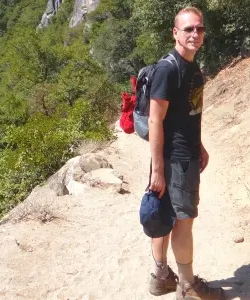
James Ian is a national park, camping and hiking expert.
He has dedicated his life to travel, visiting more than 80 countries, all 7 continents and most of the national parks in the United States. With over 35 years experience in the travel industry, James has worked on cruise ships, at resorts and hotels, and as a travel planner who’s helped hundreds of people plan successful trips to US national parks.
Based on his experience visiting our national parks multiple times, in-depth research and expertise as a travel planner, James has published detailed itineraries for many of the major national parks in the US. These itineraries, as well as in-depth park guides, and other resources will help you have your own incredible trip to US national parks without stress and hassle.
As a national park expert, James has contributed to many publications, including USA Today, Newsweek, Time Business News, Savoteur, Best Trip, and Wired.
I’m a member of the Amazon Services LLC Associates Program. As an Amazon Associate I earn from qualifying purchases.
